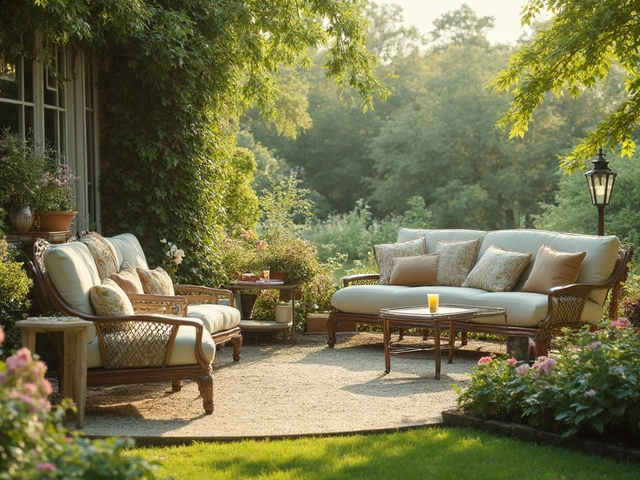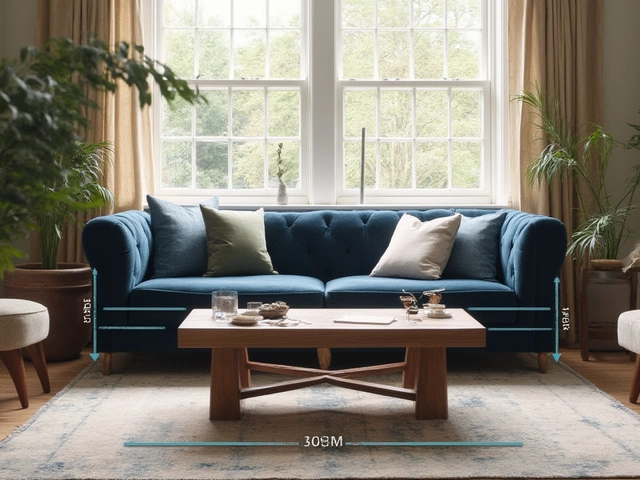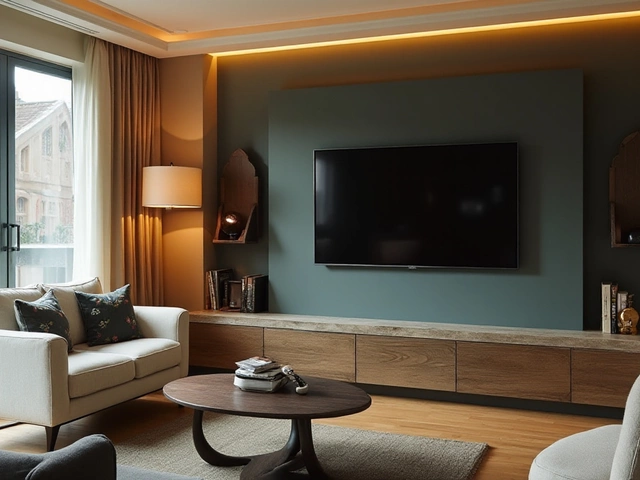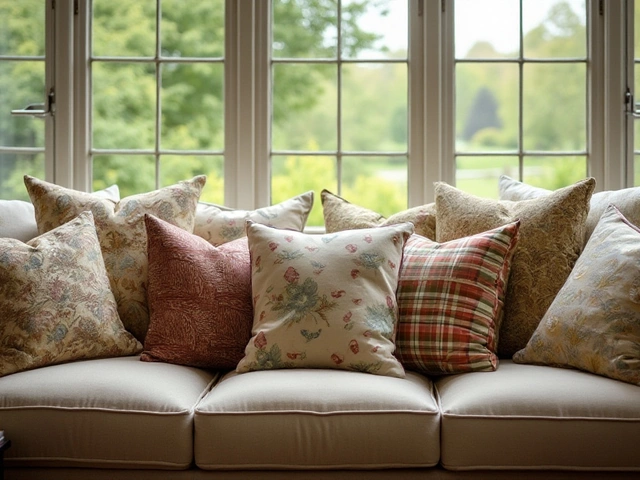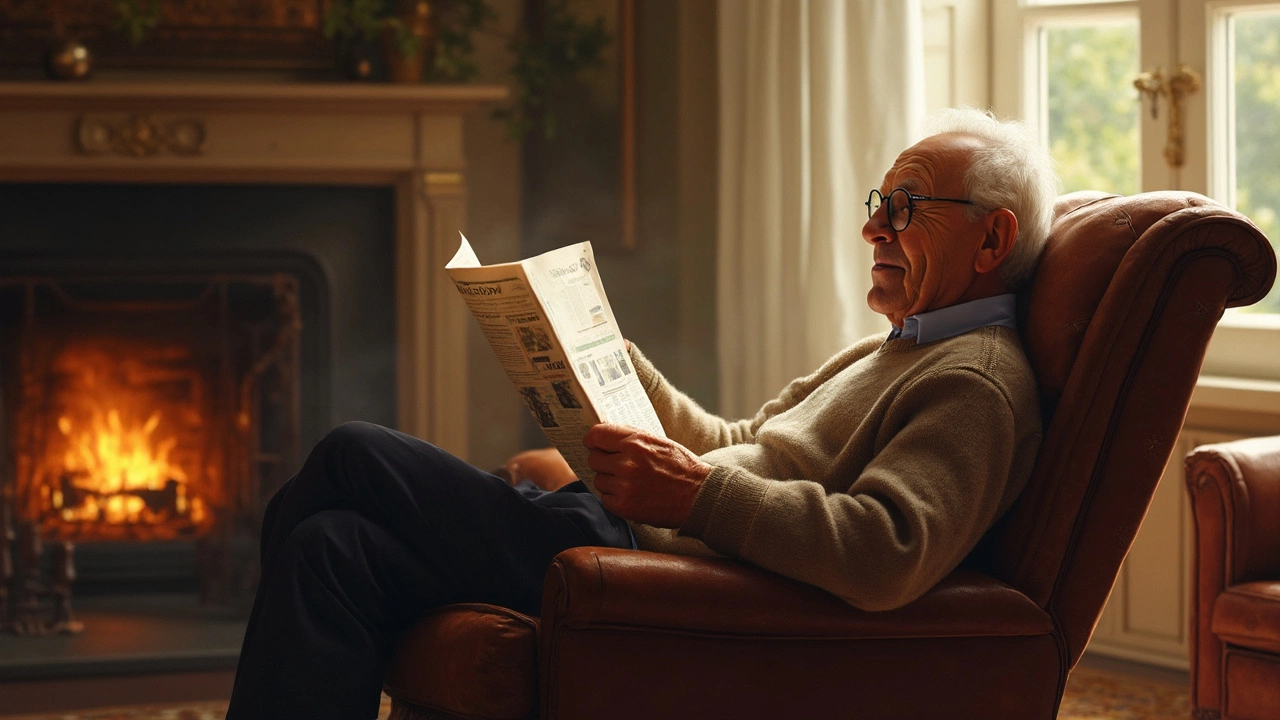 13
Apr,2025
13
Apr,2025
Feeling a bit creaky lately? You're not alone. As we add another candle to the birthday cake each year, our bodies tend to get a tad more stubborn. It's like our joints are saying, "Hey, slow down there!" Aging comes with a natural decline in flexibility due to changes in muscles, tendons, and joints. But don't worry—you're not doomed to a life of stiffness! It turns out, a good recliner chair might be one of the best investments for those aging muscles.
Recliners aren't just about kicking back and binge-watching your favorite shows (although they are superb for that, too). They're designed to support your body’s natural curves, helping to ease tension and improve circulation. These chairs can actually help reduce stiffness and enhance mobility, which is a pretty big deal when climbing the stairs starts to feel like scaling Everest.
- The Science Behind Aging and Stiffness
- Why Stiffness Hits Harder with Age
- Recliners: A Friend to Your Joints
- Picking the Perfect Recliner
- Tips for Staying Limber
The Science Behind Aging and Stiffness
Ever wonder why getting out of bed feels like a full-on workout? It’s all about how our bodies change over time. As we age, our muscles lose mass and elasticity. This isn't just something that happens overnight. It's a gradual process where our muscle fibers shrink and lose some of their youthful bounce, leading to that dreaded stiffness.
Why does this happen? Well, as we get older, the production of collagen—the protein that keeps our tissues flexible—slows down. This makes our tendons and ligaments less stretchy, leaving us feeling tighter. Plus, there’s a decrease in the fluid in our joints, which acts like oil in a car engine. So, when the oil gets low, things don’t move as smoothly.
Let’s throw in some numbers here to paint a clearer picture: muscle mass tends to decrease by about 3-8% per decade after the age of 30, and this rate gets faster when you hit 60. This drop in muscle is a big reason behind why we don’t move as easily.
| Age | Average Muscle Mass Loss |
|---|---|
| After 30 | 3-8% per decade |
| After 60 | Increased rate |
But hey, it’s not all bad news. Understanding what’s happening inside our bodies is the first step to doing something about it. Knowing that this stiffness is just a part of life can help us be proactive. How? By creating daily habits that promote flexibility and by choosing the right tools, like a supportive recliner chair, to help our joints out. Properly cushioned chairs can alleviate pressure and support natural body posture, reducing strain on your joints.
Why Stiffness Hits Harder with Age
Ever wonder why you see more older folks groaning as they get out of their recliner chairs? It's not because they're melodramatic but because aging changes things in your body. Picture your muscles and joints like a well-used rubber band. Over time, they lose elasticity and don’t snap back as easily as they used to. This leads to that unpleasant stiffness you're probably feeling.
One big player in this game is the decrease in collagen. Collagen is like the scaffolding of your body, keeping everything flexible and connected. As you age, your body produces less of it, making it tougher for your joints and muscles to move smoothly.
Another culprit? Your friendly neighborhood synovial fluid. This stuff is like oil for your joints, keeping them lubricated to prevent grinding and pain. Naturally, with age, your supply decreases, leaving those joints a tad rusty.
Let's not forget about muscle mass loss. People tend to lose muscle mass as they age, a condition known as sarcopenia. Less muscle can mean more strain on joints, contributing to that morning stiffness.
Of course, lifestyle factors like inactivity don’t help the situation. Sitting in front of the TV all day might sound cozy, but it doesn’t do much for staying limber. Engaging in regular physical activity, even just walking, can be a game-changer for maintaining flexibility.
| Factor | Impact |
|---|---|
| Collagen Reduction | Decreases flexibility and resilience in tissues |
| Synovial Fluid Reduction | Leads to stiffer, less lubricated joints |
| Muscle Mass Loss | Increases joint strain and stiffness |
| Inactivity | Contributes to overall stiffness |
Understanding these changes is vital to tackling stiffness head-on. While you can’t stop the aging process, knowing why it hits can inspire you to take steps toward feeling more comfortable.
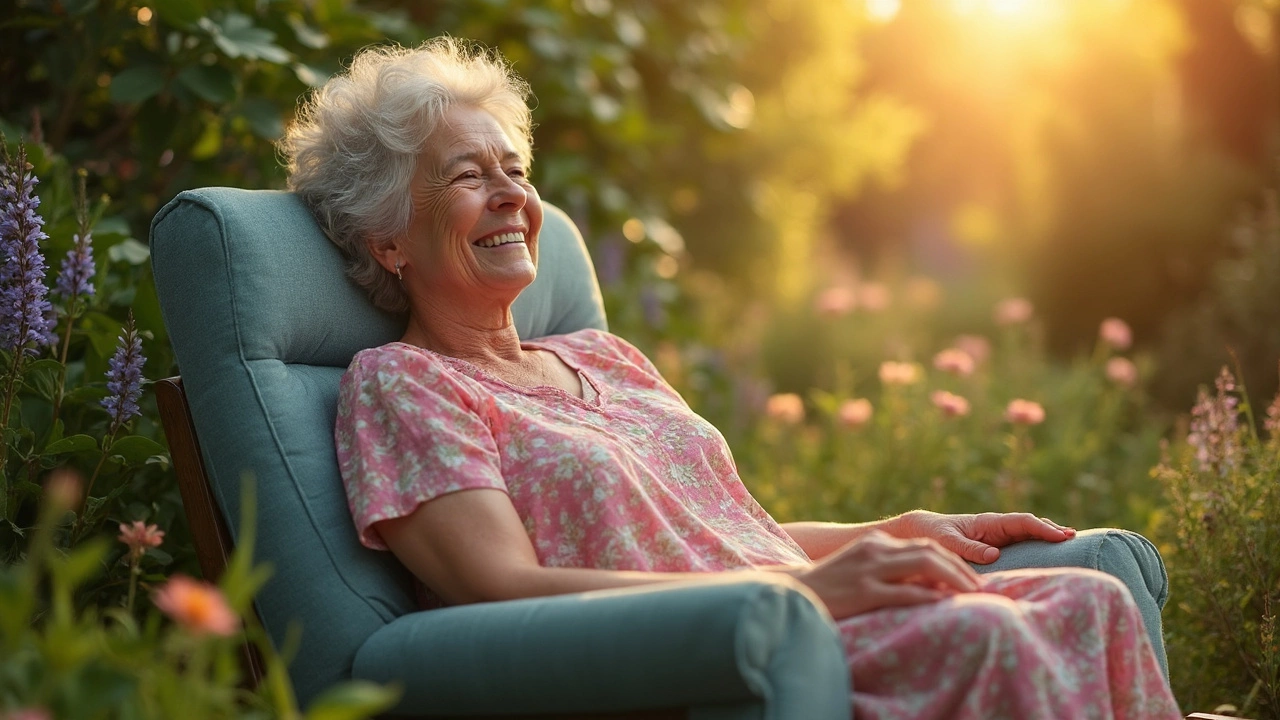
Recliners: A Friend to Your Joints
Let’s talk about what makes recliner chairs a real game-changer for aging bodies. Ever wondered why your grandpa never wanted to leave his chair? There's a good reason why recliners become indispensable as you get older. These chairs are designed to offer maximum comfort and support, especially for those pesky joints.
One of the coolest things about recliners is their ability to distribute weight evenly. This means less strain on your hips, knees, and back—areas that tend to scream for attention as we age. A good recliner can help reduce pressure on your spine and promote proper posture.
What’s amazing is that modern recliners are adjustable with multiple positions. This feature allows you to find the perfect angle, which can assist in easing joint pain. Plus, if you’ve got swelling or circulation issues, raising your feet above heart level can make a real difference.
Here are a few ways recliners offer support:
- Lumbar Support: Many recliners come with built-in lumbar support to prevent back pain. Your lower back gets the cushiony hug it deserves.
- Swivel and Rock: These options are not just fun; they also help in gentle movements that keep your joints from stiffening up.
- Heat and Massage Features: Some recliners include these features, offering soothing relief and helping to relax tense muscles.
On top of great design, recliners cater to various styles and personal preferences. Whether you love leather, take comfort in fabric, or need something extra-large, there's something for everyone.
So, if you're feeling the stiffness of age, consider a recliner. It's not just a piece of furniture; it’s a buddy in your quest to stay comfortable and mobile. After all, who doesn’t want a little friend aiding their joint health?
Picking the Perfect Recliner
Finding the right recliner is like picking the best seat in the house, literally! A well-chosen recliner will make those evening sit-downs incredibly enjoyable while giving some much-needed relief to your aging muscles and joints. But how do you choose one that rocks, tilts, and cradles you just right?
First off, consider the size. Get a recliner that doesn’t swallow you whole or leave you perched awkwardly. Sit in it, lie back, and check that your feet touch the floor when it's upright. If you’ve got long legs or a tall frame, consider a model with a higher back or a longer seat.
Next up, material matters, guys! Look for breathable fabrics or real leather if you have a bit more to spend. This not only adds a touch of luxury but also can help regulate body temperature, keeping you more comfortable.
- Choose a recliner with lumbar support to help alleviate back pain—a feature that will do wonders for easing stiffness.
- Check the motion options. There are power recliners that let you customize the angle with the push of a button—a boon for anyone with limited mobility.
- If space is a concern, wall-hugger recliners are awesome as they need only a few inches to fully recline.
Look into extra features that might elevate your comfort, like massage settings or heated seats, which can work wonders for joint health and add relaxation.
Last, but definitely not least, think about warranty and maintenance. A good recliner should last, so you'll want one that’s covered in case anything goes kaput. No one wants a chair that squeaks or gets stuck in recline mode!
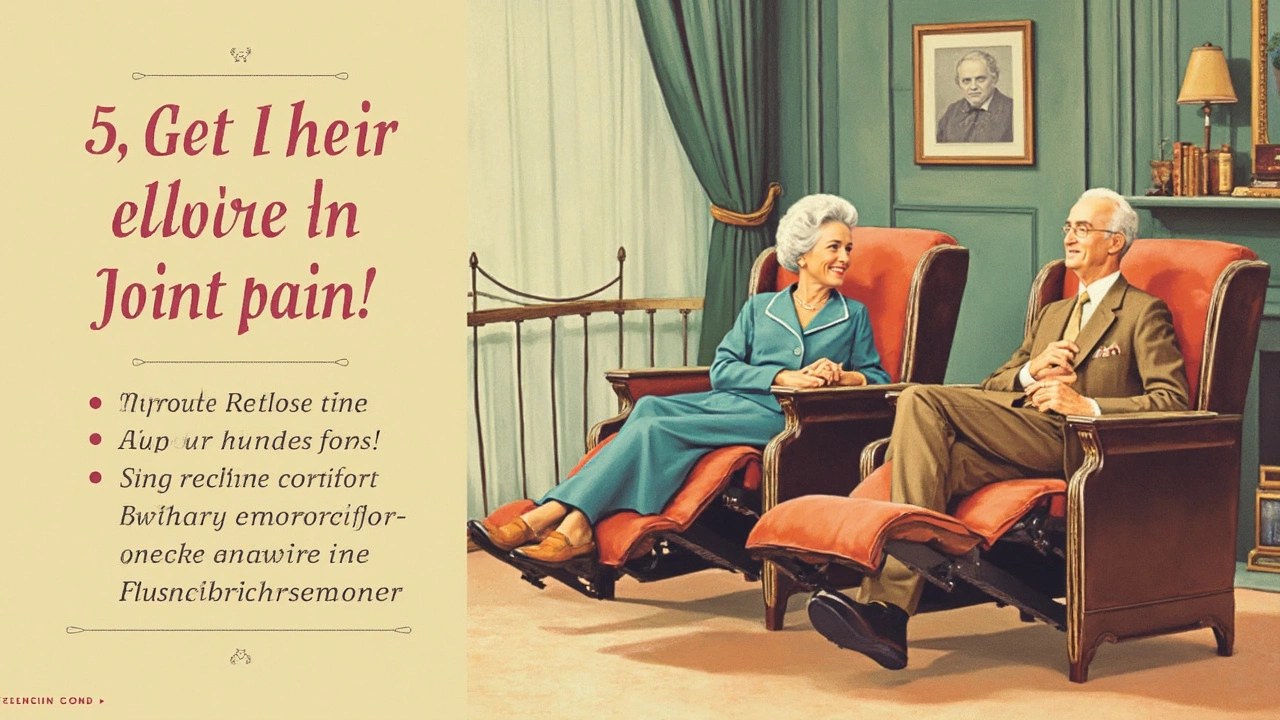
Tips for Staying Limber
Feeling stiff doesn't have to be part of your daily routine, even as you age. There are plenty of things you can do to keep those joints moving smoothly. Whether it’s tweaking your daily habits or your seating arrangements, every little bit helps.
First off, let's talk stretching. It might seem obvious, but regular stretching is a game changer. Aim to stretch at least three times a week. Focus on areas that feel the tightest, like your hamstrings and shoulders. A good stretch helps keep your joints flexible and prevents that dreaded afternoon lock-up.
Next, hydration. Believe it or not, staying well-hydrated is key. Water helps keep the cartilage between your joints lubricated, reducing friction and pain. Try to drink at least eight glasses a day. And if water’s too boring, throw in a lemon or some mint for a bit of flavor.
Exercise is another biggie. You don't need to run marathons, but regular low-impact activities like walking or swimming can do wonders for your joint health. These activities help keep your muscles strong without putting too much strain on your joints.
Consider your posture, too. Sitting hunched over a desk all day is no friend to your aging stiffness. A recliner chair is great for this as it supports good posture. While relaxing, try to sit as aligned as possible with the back and neck properly supported. Adjust the chair settings to see what feels comfy while giving your body ample support.
Lastly, think about what you’re eating. Foods rich in omega-3 fatty acids, like salmon or walnuts, can help reduce joint inflammation. Don’t forget the veggies! Leafy greens like spinach and kale are packed with nutrients that keep your circulatory system vibrant, which is important as you age.
- Stretch a few times each week.
- Stay hydrated for joint health.
- Engage in low-impact exercises.
- Maintain a good posture with proper seating.
- Eat a balanced diet rich in omega-3s and greens.
